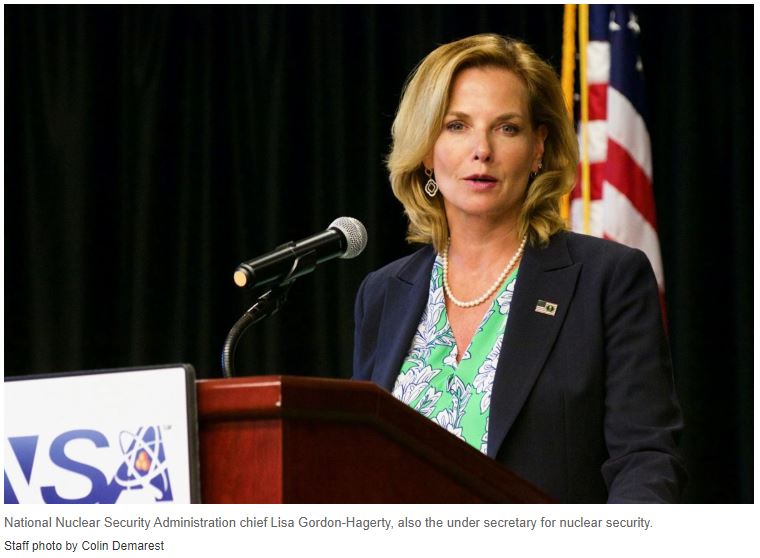Preparations and planning for plutonium pit production must continue amid the novel coronavirus pandemic, a “difficult” and challenging time, National Nuclear Security Administration chief Lisa Gordon-Hagerty wrote in a recent letter.
“The plutonium pit production mission is one of our highest national security priorities and is being done in accordance with congressional direction,” Gordon-Hagerty wrote to U.S. Sen. Tom Udall, a New Mexico Democrat. “We must press forward with this project in order to meet Department of Defense deliverables.”
Udall and U.S. Sen. Martin Heinrich, another New Mexico Democrat, in late April wrote to the National Nuclear Security Administration, asking the weapons-and-nonproliferation agency to extend a public comment period tied to plutonium pit production at Los Alamos National Laboratory, near Albuquerque and Santa Fe.

Gordon-Hagerty in her April 30 response said she appreciated the “interest in this matter” and that she takes the “concerns very seriously.”
Federal law requires the production of 80 plutonium pits – cores at the heart of modern nuclear weapons – per year by 2030. To meet that ambitious mark, the National Nuclear Security Administration and the Defense Department in May 2018 recommended a two-pronged, cross-country approach: 50 per year would be produced at the Savannah River Site, at a repurposed Mixed Oxide Fuel Fabrication Facility, and 30 per year would be made at a beefed up Los Alamos National Laboratory.
If needed, either site could boost production to satisfy the 80-pits-per-year demand, the National Nuclear Security Administration acknowledged in separate studies released earlier this year.
Numerous nuclear executives have recognized the aggressive schedule they are working with; 10 years does not afford great latitude considering the endeavor’s scale, complexity and price tag.
“We are going like gangbusters on this,” Savannah River Nuclear Solutions President and CEO Stuart MacVean has said, adding, “It’s going to ask us to do in 10 years what would typically take 15 to 20 in today’s environment.”
Every moment, then, counts.
Thirteen cumulative cases of COVID-19, the disease caused by the novel coronavirus, have been confirmed at the Savannah River Site, which pivoted to essential mission-critical operations weeks ago. Measures to combat the spread of the virus at the site include chemical cleaning and disinfecting regimens, temperature checks, cloth-masks and teleworking policies, and “sanitizer by the gallons,” an Energy Department spokesperson has said.
Similarly, Gordon-Hagerty in her April dispatch to Udall said the National Nuclear Security Administration “worked closely” with the Los Alamos management and operations contractor to “take precautions to protect our workforce” while simultaneously continuing “the work that protects our nation.”
The NNSA chief has a track record of pit production primacy.
In testimony provided to a Senate Armed Services subcommittee this time last year, Gordon-Hagerty described pit production – and all it requires – as her agency’s “highest” infrastructure priority.
Under Secretary of Defense for Acquisition and Sustainment Ellen Lord has described the pit venture as the defense “lynchpin,” beating out the rebuilding of uranium, lithium and tritium capabilities.
“History has made clear that the U.S. nuclear deterrent is the foundation of U.S. national security and fundamental to international stability,” the top weapons buyer has said. “Delay is no longer an option.”
